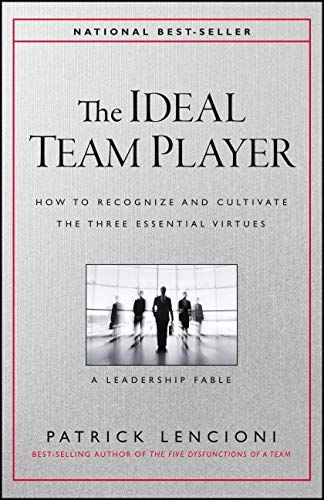
The Ideal Team Player How to Recognize and Cultivate The Three Essential Virtues
In his classic book, The Five Dysfunctions of a Team, Patrick Lencioni laid out a groundbreaking approach for tackling the perilous group behaviors that destroy teamwork. Here he turns his focus to the individual, revealing the three indispensable virtues of an ideal team player. In The Ideal Team Player, Lencioni tells the story of Jeff Shanley, a leader desperate to save his uncle’s company by restoring its cultural commitment to teamwork. Jeff must crack the code on the virtues that real team players possess, and then build a culture of hiring and development around those virtues. Beyond the fable, Lencioni presents a practical framework and actionable tools for identifying, hiring, and developing ideal team players. Whether you’re a leader trying to create a culture around teamwork, a staffing professional looking to hire real team players, or a team player wanting to improve yourself, this book will prove to be as useful as it is compelling.
Reviews
Katie Palmer@katiepalmer
Scott Wilson@createpei
Scott Wilson@createpei
Megan Rose@meganrosereads
LongYC@longyc
Joe Gemignani@jnani
Ashley Torres@aashkleey
Jannis M@jmm
Drew Spartz@drewspartz
Elizabeth Clement@lizziethebadger
Philip Harrison@feelepxyz
Levi Nelson@levinelson
Laura Walden@lauracwalden
Christian Witts@christianwitts
Lance Willett@lancewillett
Arnaud Spuhler@arnaud